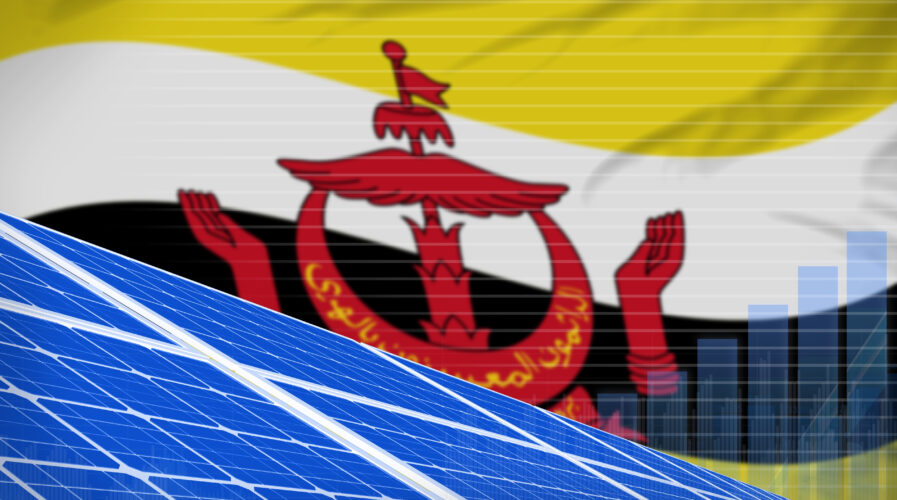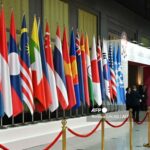
BIMP-EAGA taps renewable energy for green recovery. Photo: Shutterstock
BIMP-EAGA taps renewable energy for green recovery
Renewable energy (RE) is at the heart of going green in ASEAN’s BIMP-EAGA sub-region. The Brunei-Indonesia-Malaysia-Philippines East ASEAN Growth Area is committed to sustainability and developing clean and green technologies in its Vision 2025 and covid-19 recovery strategy.
Building green cities, boosting ecotourism, shifting to the circular economy, and guiding small businesses towards green manufacturing is part of the subregion’s pivot to becoming an eco-friendly territory.
BIMP-EAGA sub-region’s transition to renewable energy
Transitioning to renewable energy is now becoming a priority in realizing its green objectives, as well as its target in providing electricity to all of its rural households – across the whole of Brunei Darussalam; Indonesia’s Kalimantan, Sulawesi, Maluku, and West Papua; East Malaysia’s Labuan, Sabah, and Sarawak; and the Philippines’ Mindanao and Palawan – by 2025.
There are several energy projects lined up under Vision 2025. The first one was touted as a model for future power grid interconnections within the region, and a step towards making an ASEAN Power Grid a reality is the Trans-Borneo Power Grid Sarawak-West Kalimantan Interconnection Project.
Others include North Kalimantan Power Grid Interconnection Project in Indonesia; Limbang Hydro Project 1 (Sarawak–Sabah Interconnection) in Malaysia; Visayas–Mindanao Interconnection Project in the Philippines; and Borneo–Mindanao power interconnection project; and Sabah-Palawan project.
Subregion exploring the other renewable energy potential
Hydropower is the most common renewable energy source so far. The subregion is also exploring the potential of using its wealth of biomass, geothermal, natural gas, solar, and wind energy. Malaysia’s Sarawak, for example, has its sights set on becoming the ‘Battery of ASEAN’, and sees more than the socio-economic benefits that come with developing and deploying renewable energy.
“In addition to employment and greater electrification coverage, we are also recording sustainability benefits. We were able to decarbonize our power system by lowering our grid carbon emission intensity by 68 percent since 2010,” said Sarawak’s utilities minister, Datuk Seri Dr Stephen Rundi Utom, in a statement last year reiterating the state’s commitment to supporting Malaysia’s targets under the Paris Agreement.
Samaiden Group collabs with Sarawak-based integrated power solution provider
“We are committed to maximizing our pursuit of balanced and holistic RE development to achieve energy security, energy reliability, and energy affordability for Sarawak,” he said, adding, “We will continue to maintain Sarawak’s position as the country’s largest renewable energy provider.”
Recently, RE and environment solutions provider Samaiden Group announced its collaboration with Sarawak-based integrated power solution provider Sinowaja, in solar photovoltaic (PV) and smart or microgrid systems-related projects in East Malaysia.
“With sustainability being the forefront of Sarawak’s development agenda, alongside its possession of abundant natural resources, we anticipate substantial investments in the RE industry from both the private and public sectors in the coming years, to electrify the region with clean energy,” said Chow Pui Hee, group managing director of Samaiden.
Malaysia’s latest LSS@MenTARI large scale solar program offering 1,000MW solar quota — its largest so far — up for bidding since 2020, also sparked intense interest in accelerating its RE development.
Indonesia and Japan inked a MoC to facilitate Indonesia’s energy transition process
Meanwhile on January 10 2022, Indonesia and Japan inked a Memorandum of Cooperation (MoC) to facilitate Indonesia’s energy transition process, which includes developing and deploying green tech involving ammonia fuel, hydrogen, carbon recycling, and CCS/CCUS (carbon capture, utilization, and storage).
The Philippines will start an Energy Transition Mechanism (ETM) pilot project in Mindanao, which seeks to retire and then repurpose its coal-fired power plants by rehabilitating and expanding the Agus-Ulangi hydropower plants. In the meantime, Brunei is increasing its share of renewables in its energy mix to 10% by 2035.
READ MORE
- Strategies for Democratizing GenAI
- The criticality of endpoint management in cybersecurity and operations
- Ethical AI: The renewed importance of safeguarding data and customer privacy in Generative AI applications
- How Japan balances AI-driven opportunities with cybersecurity needs
- Deploying SASE: Benchmarking your approach


